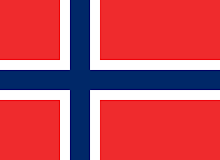http://www.allscandinavia.com
Monday, November 24, 2008
Drinking Laws and History
http://www.allscandinavia.com
Food For Visitors
In the country-side, these traditions are even stronger. Even if one just drops in unexpected, the woman of the household will go out of her way to put together a large variety of foods. If the season is right, there may be fruit pies, and a common treat is strawberries with milk and sugar.
During the winter, rømmegrøt (porridge made of sour cream) and fenalår (smoked mutton thigh) are common treats, often served with flatbrød (light, flaky bread).
Sweeter snacks include lefse (flat bread spread with a sugar and butter mixture) and svele, a thick pancake version of lefse.
Christmas and Santa Claus
Wedding Traditions
Similar to US weddings, the bride and groom exchange rings and kiss to make their unity official. They believe that the round ring represents never-ending love and the kiss represents the exchange of a portion of each other’s souls.
Music is a very important part of a Norwegian wedding. The traditional song is "Come to the Wedding," and accordion music is played as the bride and groom exit the church.
http://www.worldweddingtraditions.com
Sunday, September 28, 2008
School Life
School life is very different in Norway than here in the US. First off, they go to kindergarten before age 6 and have no classes, they just play all day, then they go to elementary school for grades 1-7, then to a junior high school from 8-10 grade. After that they go to high school for grades 11-13.
High school is very different for them than us. When they go to high school, they must think about what they want to do for the rest of their lives. High school for them is kind of like college for us. There are separate high schools for people who want to be a cook, a secretary, a teacher, etc. There is an entirely different high school for careers that require more education, like that of a doctor or a lawyer. This is also where people who are undecided in what they want to do, where they can take more in depth generals.
All classes are divided into sections: A, B, and C, and depending on the number of people, sometimes D and E. This is just a random classification to keep class sizes down.
In Norway, there are no school colors or sports. They don’t have yearbooks like we do, they are just books with pictures of each class, no extra things or candids like what we have in the US.
The teachers don’t really show an interest in the students. In the US, we often form something of a bond with some teachers, talking to them about random things and teasing each other. In Norway, the teachers don’t do this. They don’t even do anything if people use their phones during class. Students often text throughout class in plain view of the teacher, and some even take or make phone calls when they’re supposed to be working on work.
One last thing that’s different is lunch. In Norway, they don’t actually serve the students lunch. They can buy things from the cafeteria, so most students bring their own lunch or bought food from the mall near the school.
~My source is my Norwegian friend Becca
Wednesday, September 17, 2008
Religion
Norway, however, is more of an atheist country. They do have people that practice religion, of course. Some religions practiced are Catholicism, Christianity, and others like we have here in the US, along with Islam, practiced by Muslim immigrants, and there are other religions there that don’t translate in the English language. Also, in Norway, they don’t say anything like the Pledge of Allegiance. In fact, when my friend Becca was here as a foreign exchange student, she at first felt like the Pledge was a sort of cult thing! So in Norway, the majority of the country is atheist, and very few people actually do believe.
~My source is my Norwegian friend, Rebecca
Wednesday, September 10, 2008
Dating
Just recently, I was talking to her about how relationships are different in Norway than in the United States. She was telling me about this guy she really liked. One night they spent a lot of time talking and they kissed. I asked her if she was dating him, and she told me, "Kind of, but not really." I didn’t understand what she meant so she elaborated.
Apparently, in Norway, when you find a person you like, you usually don’t start dating right away. You casually date several people until you figure out which one you like most. Sure, we do that in America, but most people don’t like that way of doing it and commit to a relationship when they like someone. According to my friend, that’s very rare in Norway. She said it’s kind of like a test that they have to pass in order to become exclusive with the person they like. Once they begin dating officially, that’s when they commit themselves to each other.
I just found it interesting how much laid back Norwegians are when it comes to dating. It’s just a small fact, but I wanted to share it.
~My source is my Norwegian friend, Rebecca
